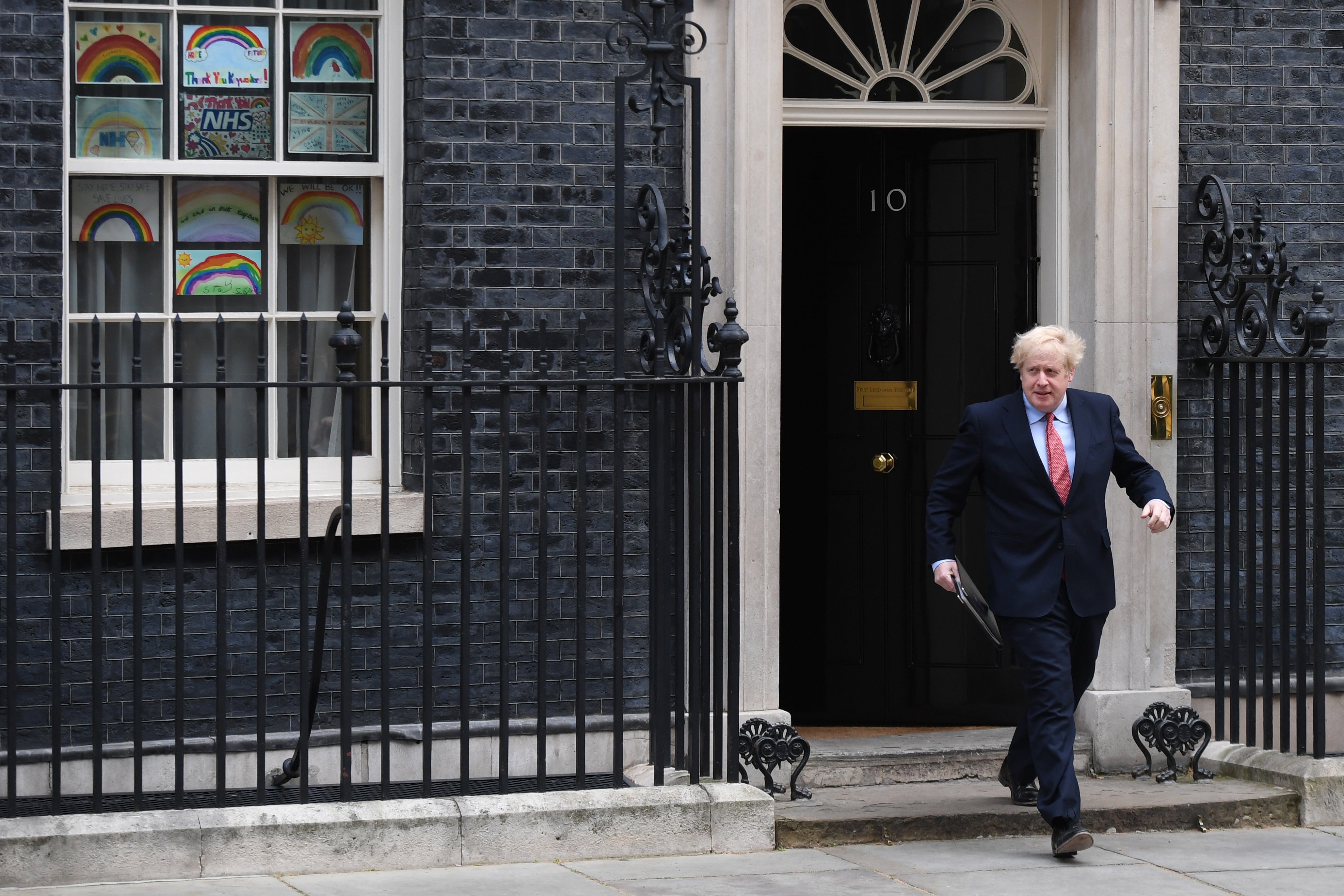In full: The 2005 coronavirus plan that predicted outbreak response from ‘super-spreader’ events to travel
The Coronavirus Files: Samuel Lovett looks at what the uncovered Sars blueprint recommended – and what the UK government did at the same point in the pandemic


Your support helps us to tell the story
From reproductive rights to climate change to Big Tech, The Independent is on the ground when the story is developing. Whether it's investigating the financials of Elon Musk's pro-Trump PAC or producing our latest documentary, 'The A Word', which shines a light on the American women fighting for reproductive rights, we know how important it is to parse out the facts from the messaging.
At such a critical moment in US history, we need reporters on the ground. Your donation allows us to keep sending journalists to speak to both sides of the story.
The Independent is trusted by Americans across the entire political spectrum. And unlike many other quality news outlets, we choose not to lock Americans out of our reporting and analysis with paywalls. We believe quality journalism should be available to everyone, paid for by those who can afford it.
Your support makes all the difference.When Covid-19 struck, the government – backed by its scientific advisers – turned to the UK’s influenza pandemic strategy, which they say was the only realistic “template” in the early days of the pandemic.
Britain was confronted with a “brand new infection … for which we which we had no diagnostics, treatments or vaccines,” says Sir Jeremy Farrar, a senior member of the government’s Scientific Advisory Group for Emergencies (SAGE). As such, he argues, “you’ve got to go back to some sort of template that you can run a system on, while you then adapt as new data and evidence comes in”.
But if the Sars contingency plan, uncovered now after 16 years, had been adapted the UK’s response would have been far more proactive as Covid spread from China to Europe early last year. Many of the measures it highlights later became key flashpoints for the UK’s outbreak and debate over restrictions, from international travel to limiting mass gatherings and protecting healthcare settings.
This step-by-step framework, which works its way through six alert levels – from zero to five – depending on the severity of an outbreak, would have shaped many aspects of Britain’s response to Covid as far back as January 2020.
Level 0: No WHO-confirmed cases internationally
The emphasis here is preparedness and preparation. The plan sets out strategic priorities that need to be addressed to ensure the UK can respond effectively in the eventuality of an outbreak.
These include developing and maintaining diagnostic networks, ensuring excess patient care capacity in the NHS, keeping PPE supplies well stocked, and identifying and addressing weaknesses in the system that could leave the UK vulnerable to a major outbreak.
The reality: Prior to 2020, the UK’s preparedness was limited. Exercise Cygnus, a 2016 simulation of a flu outbreak, revealed that Britain would struggle to cope “with the extreme demands of a severe pandemic”.
It demonstrated that the country would face a huge shortage of ventilators and personal protective equipment (PPE) for health workers. These shortcomings were never addressed, with contingency planning diverted to deal with a possible no-deal Brexit.
Level 1: No cases in the UK, but limited cases occurring in one country abroad
The nature of the Covid threat took time to become apparent throughout January. The genome of the virus was first shared globally on 12 January, following reports of rising cases in China.
Had the Sars plan been followed, by the second half of that month health officials would have started accelerating the development and production of Covid tests; identified which virology laboratories could be put to use for this; raised alertness among GPs and clinicians in A&E; established a reporting system for “cases of compatible illness in people returning” from China; and heightened monitoring for clusters of unidentified atypical pneumonia.
The reality: Considering the focus on Brexit, there was little acknowledgement by Downing Street of the potential threat posed by Covid-19 in the early weeks of January. The ability to take pre-emptive action was also limited by the amount of data being shared with the world by Chinese officials.

Level 2: Uncontrolled spread in one or more countries outside the UK, including the sporadic importation of cases
By 20 January, cases had been recorded in Thailand, Japan and South Korea. This will have been enough to trigger Level 2 of the Sars plan.
At this stage, the document warns that “an infectious person could transmit [the] infection on board an aircraft”, and recommends that “voluntary home quarantine” should be considered for incoming travellers to the UK from affected areas. Reducing travel to and from these countries is advised.
The rapid identification of cases, including their close contacts, is also emphasised under Level 2, while health leaders are instructed to review infection control protocols, such as efficient ventilation in hospitals, and PPE supplies. Hospitals must be assessed to determine their readiness in accepting suspected patients, the plan says.
The reality: The Foreign Office didn’t advise against all but essential travel to Wuhan until 23 January. Public Health England (PHE) had begun carrying out enhanced monitoring of direct flights from China just one day before. Travel to other nations that had also recorded cases, such as Japan and South Korea, was still permitted.
Former health secretary Matt Hancock told MPs that the risk of Covid to the UK population had been revised from “very low” to “low”. He insisted the country was “well prepared and well equipped” to deal with an influx of cases. “The NHS is ready to respond appropriately to any cases that emerge,” he added.
Level 3: Outbreaks in the UK, including hospitals and limited community transmission
The first handful of Covid cases in Britain were confirmed on 31 January – at which point Level 3 of the Sars plan would have been initiated.
By early February, the government should have activated its Emergency Operations Room (Cobra), started providing regular press briefings, ensured the continuation of contact tracing and quarantine, and considered increasing diagnostics capabilities at UK laboratories.
Health leaders should have meanwhile determined the “minimum staffing levels needed to remain functional” and introduced strategies for “maintaining staff levels”, including the redeployment of staff within trusts or restricting non-essential leave. Arrangements to monitor the effectiveness of infection control policies in hospitals should also have been introduced.
The plan recommends preparing for the opening of infectious diseases wards and “cohort nursing of patients”, and says that staff should be monitored for signs of infection.
The reality: On 10 February, the government admitted that Covid posed a serious and imminent threat to public health, and declared new powers to forcibly quarantine people for their own safety. Days later, Boris Johnson left Downing Street for recess and took a “working” holiday outside of London.
On 25 February, the government said that travellers returning from Hubei, Iran, and certain regions of South Korea should self-isolate after returning home, even if they had no symptoms.
Read more special reports from our Supporter Programme
Little progress had been made in obtaining PPE and testing kit from manufacturers. Instead, hundreds of thousands of PPE items from the UK’s depleted stockpile were sent to China in February, while Britain’s private laboratories, which had capacity to mass-produce tests, continued to be overlooked.
Level 4: Epidemic in the UK – outbreaks with extensive community transmission
A total of 16 cases had been reported in the UK by 27 February. At the same time, pandemic modelling presented to the government warned that 27 million people would be infected if no action was taken.
By this point, Level 4 would have been initiated, ushering in a raft of measures. Screening at ports and airports, “if not already implemented”, would have been considered, so too would restrictions on public events, mass gatherings – which could serve as “super-spreader” events – and the movement of people.
The plan calls for “intense case finding and [the] follow up of contacts,” the investigation of community outbreaks, the establishment of a “laboratory based epidemiology network”, and the “confirmatory” testing of people.
The reality: Boris Johnson had skipped five Cobra meetings by 4 March, sports events were being held up to 11 March, the UK’s contact tracing system was wound down a day later, and thousands of people were still flying into Britain from hotspots such as China, Italy and Iran right up until the day of lockdown.
A study by the University of Southampton later showed that 190,000 people, of whom 1,900 were estimated to have been infected, flew into the UK from Wuhan and other high-risk Chinese cities between January and March.

Level 4 also warns of many of the scenarios that ultimately played out in March as control of the Covid outbreak slipped away, including the “increased demand for health resources” and the subsequent “reduction in routine tasks or even non-treatment” of infected patients.
Level 5: De-escalation of the response
In this scenario, one we have yet to reach, cases of Covid are no longer being re-imported into the UK from international travellers. Level 5 also envisions that the World Health Organisation is likely to declare the UK free of Covid after 20 consecutive days of no new suspected cases.
The reality: Given the differences between Sars and Covid, the latter of which transmits before the appearance of symptoms, it is unlikely the UK and many other countries will ever be rid of Sars-CoV-2. Experts have warned that we will have to learn to live with the virus, which has now become endemic.


Join our commenting forum
Join thought-provoking conversations, follow other Independent readers and see their replies
Comments